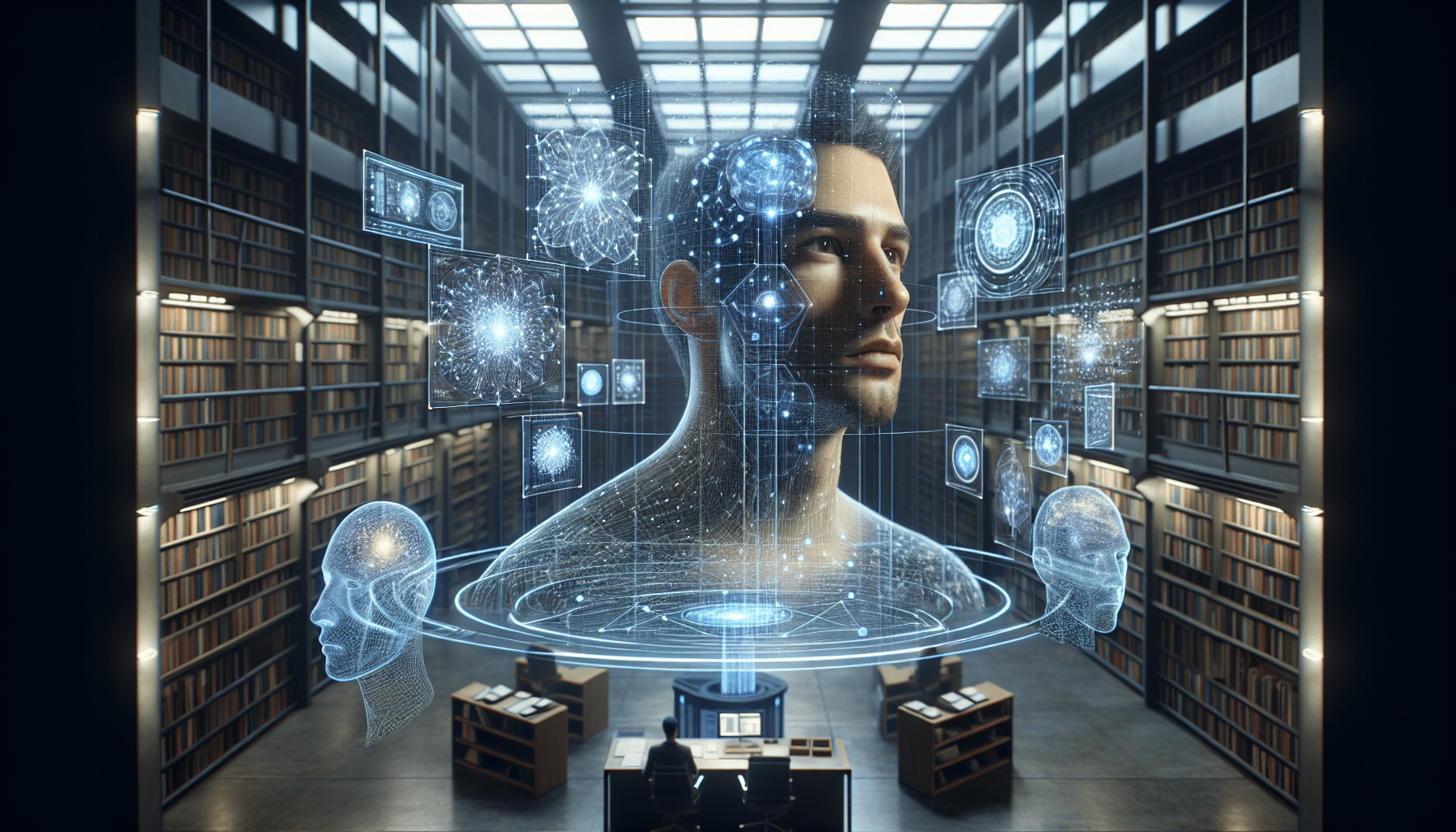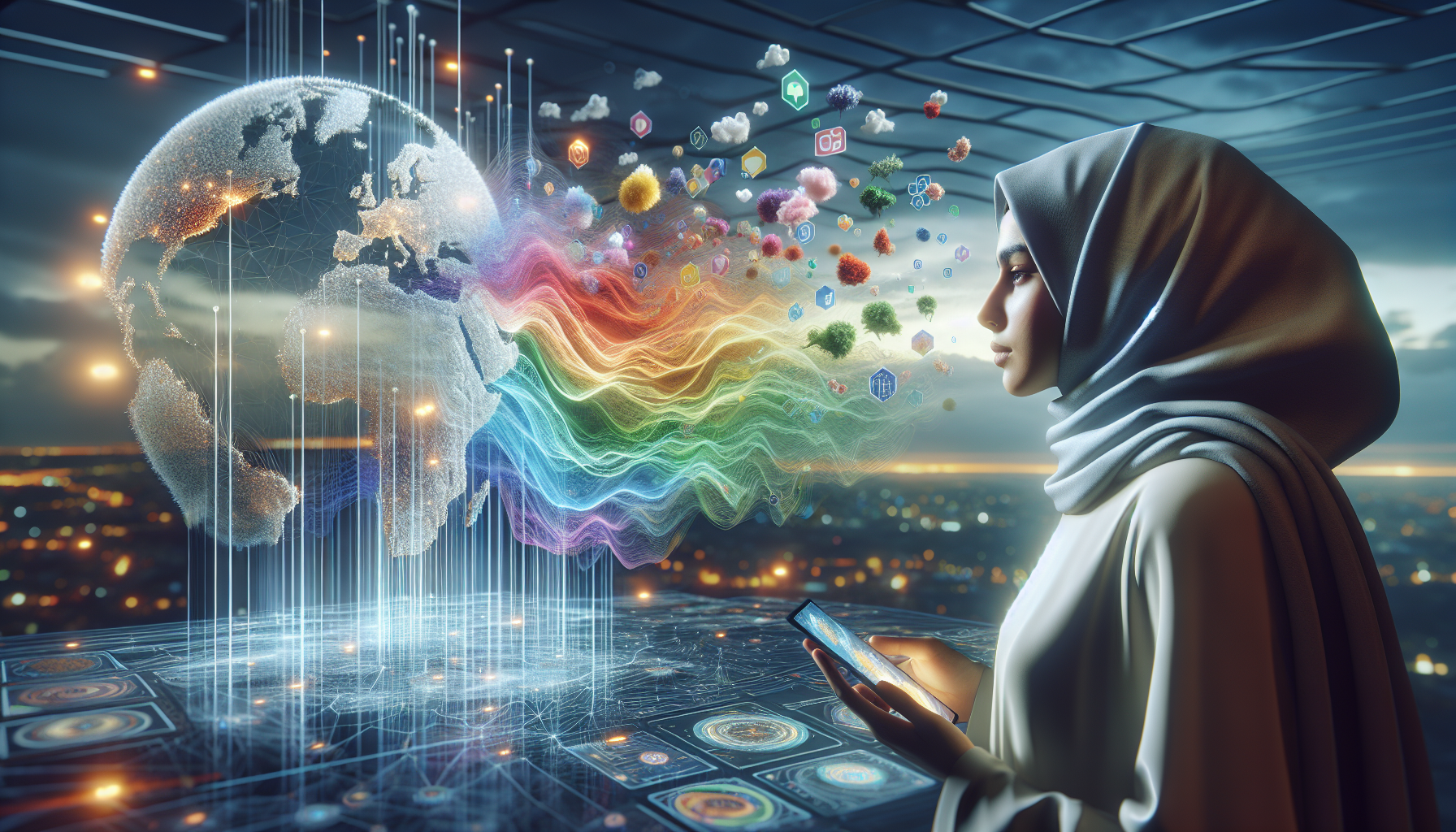اشتہارات
In the intricate labyrinth of the human mind, cognitive maps serve as essential tools for navigating our perception of the world. These mental constructs enable us to organize and interpret the myriad of sensory information we encounter daily. As you journey through this exploration of cognitive maps, you’ll uncover how these mental frameworks shape our understanding, influence decision-making, and impact our interactions with the environment.
اشتہارات
Cognitive maps are more than mere representations of physical spaces; they encompass abstract concepts and ideas, guiding us through both concrete and intangible experiences. This dynamic ability to form and utilize cognitive maps allows humans to adapt and thrive in an ever-changing world. By delving into the science behind these mental processes, we gain insight into the complexities of human cognition and perception.
اشتہارات
Throughout this exploration, key topics such as spatial awareness, memory, and learning will be examined, providing a comprehensive understanding of how cognitive maps function. The interplay between neural pathways and environmental cues will be highlighted, illustrating the profound influence these maps have on our behavior and thought processes.
The Fundamentals of Cognitive Maps
At the heart of our understanding of how humans perceive the world lies the concept of cognitive maps. This term, originally coined by psychologist Edward Tolman in 1948, refers to the mental representations of physical spaces that help individuals navigate and understand their environments. Cognitive maps are not merely static images; rather, they are dynamic and flexible constructs that allow for the integration of new information, adaptation to changes, and the prediction of future scenarios.
Cognitive maps are crucial because they provide the framework within which we encode, store, and retrieve spatial information. This ability is not just useful for navigation but also for broader cognitive processes like planning, decision-making, and memory retrieval. Research has demonstrated that cognitive maps are not limited to spatial information alone but extend to abstract domains, including social relationships and conceptual understanding.
How Cognitive Maps Are Formed
The formation of cognitive maps is a complex process that relies on the interaction of various cognitive functions. Initially, sensory input from our environment is gathered through sight, sound, touch, and other senses. This input is then processed and interpreted by our brain to form a coherent picture of the environment. Attention plays a crucial role in this stage, as it determines which elements of the sensory input are prioritized and encoded.
As we navigate through environments, our brains continuously update these cognitive maps by integrating new information. This dynamic process involves the use of working memory, which temporarily holds information for manipulation and integration. Over time, information deemed important or frequently accessed is transferred to long-term memory, where it becomes more stable and can be retrieved when needed.
Moreover, the hippocampus, a critical brain structure, plays a significant role in the formation and retrieval of cognitive maps. Studies have shown that damage to the hippocampus can severely impair an individual’s ability to form new cognitive maps, highlighting its importance in spatial navigation and memory.
The Role of Cognitive Maps in Daily Life
Cognitive maps are indispensable tools in our daily lives, aiding in a myriad of tasks beyond mere navigation. For instance, when planning a trip, we utilize cognitive maps to visualize routes, anticipate obstacles, and strategize alternatives. This ability to mentally simulate scenarios and predict outcomes is essential for effective decision-making.
Furthermore, cognitive maps extend to our understanding of social structures and relationships. We often map out social networks, identifying connections, hierarchies, and roles within groups. This social navigation helps us interact more effectively within our communities and professional environments.
Another fascinating aspect of cognitive maps is their role in learning and education. Students often create cognitive maps of subject matter, linking concepts and organizing information in a way that facilitates understanding and recall. Teachers can enhance learning by helping students develop robust cognitive maps that integrate new information with existing knowledge.
Applications of Cognitive Maps in Technology
The principles of cognitive maps have been harnessed in various technological applications. One prominent example is in the field of artificial intelligence, where cognitive maps are used to enhance machine learning algorithms. By mimicking human cognitive processes, AI systems can better interpret data, make predictions, and adapt to new information.
Moreover, cognitive maps play a role in the development of virtual reality environments, where they aid in the creation of immersive experiences that mimic real-world navigation. These technologies utilize our understanding of cognitive maps to design intuitive and user-friendly interfaces.
In the realm of geographic information systems (GIS), cognitive maps contribute to the development of user-centric mapping solutions that consider human perception and cognitive biases. These applications ensure that digital maps are not only accurate but also align with the mental models of users, enhancing usability and comprehension.
Challenges in Understanding Cognitive Maps
Despite significant advances in our understanding of cognitive maps, several challenges remain. One major issue is the variability in cognitive map accuracy among individuals. Factors such as age, experience, and cognitive abilities can influence how well a person can create and use cognitive maps.
Additionally, cognitive maps are subject to distortions and biases. For example, research has shown that people tend to overestimate distances between locations in unfamiliar environments while underestimating distances in familiar ones. These biases can affect navigation efficiency and decision-making.
Another challenge lies in studying the neural mechanisms underlying cognitive maps. While the hippocampus is known to be crucial, the exact neural pathways and interactions with other brain regions remain subjects of ongoing research. Advanced imaging techniques and neurophysiological studies are shedding light on these processes, but much is still unknown.
The Future of Cognitive Map Research
Looking ahead, the field of cognitive map research holds promising potential for advancements in both scientific understanding and practical applications. One area of interest is the intersection between cognitive maps and neuroplasticity, the brain’s ability to reorganize itself by forming new neural connections. Understanding how cognitive maps change over time could lead to interventions that enhance cognitive flexibility and adaptability.
Furthermore, as technology continues to evolve, cognitive maps may play an even greater role in the development of smart environments and autonomous systems. By leveraging insights from cognitive map research, engineers and designers can create systems that are more intuitive and better aligned with human cognitive processes.
- Understanding cognitive maps enhances navigation skills.
- Cognitive maps contribute to effective decision-making.
- Social interactions benefit from mapping relationships.
- Technology leverages cognitive maps for AI and VR.
- Challenges include biases and neural understanding.
| پہلو | Description |
|---|---|
| Formation | Involves sensory input, attention, and memory. |
| درخواستیں | Used in AI, VR, and GIS technologies. |
| Challenges | Includes biases and neural complexities. |
| Future Directions | Explores neuroplasticity and smart systems. |

نتیجہ
In conclusion, the exploration of cognitive maps unveils the intricate ways in which humans perceive and interact with the world. Cognitive maps, first introduced by Edward Tolman, are not just limited to spatial navigation; they extend into abstract domains, influencing decision-making, planning, and social interactions. Understanding the formation of cognitive maps, which involves sensory input, attention, and memory, sheds light on how we build and maintain these mental models. Furthermore, these maps are crucial in learning, education, and technology, enhancing AI, virtual reality, and geographic information systems by mimicking human cognitive processes.
Despite their importance, challenges such as individual variability, cognitive biases, and the complexities of neural mechanisms persist. These issues underscore the need for continued research to deepen our understanding of cognitive maps. Advances in neuroimaging and studies on neuroplasticity promise to illuminate these challenges, offering potential interventions to enhance cognitive flexibility.
ٹونی سینٹوس ایک ڈیجیٹل کارٹوگرافر، بصری مفکر، اور حیرت انگیز طور پر عجیب کا کیوریٹر ہے۔ پر ایزاپ، وہ کی جنگلی دنیا میں غوطہ لگاتا ہے۔ عجیب و غریب نقشے، تخیل شدہ جغرافیے، اور متبادل کارٹوگرافک حقیقتیں۔اپنے اردگرد کی دنیا کو ہم کس طرح دیکھتے اور محسوس کرتے ہیں اس پر ایک تازہ تناظر پیش کرتے ہیں۔
اس کا کام اس یقین میں جڑا ہوا ہے۔ نقشے نیویگیشن ٹولز سے زیادہ ہیں۔. وہ ادراک، یادداشت، تخیل، اور یہاں تک کہ افسانے کے پورٹل ہیں۔ مسخ شدہ تاریخی چارٹس سے لے کر حقیقی زمینی شکلوں، سازشی اٹلس، اور AI سے تیار کردہ ورلڈ بلڈنگ تک، ٹونی ایسے نقشے تیار کرتا ہے اور جمع کرتا ہے جو منطق کو چیلنج کرتے ہیں اور تجسس کو جنم دیتے ہیں۔.
کہانی سنانے، آرٹ اور علامتی تلاش کے پس منظر کے ساتھ، ٹونی نے انکشاف کرنے کے لیے Aysapp کو ایک پلیٹ فارم کے طور پر استعمال کیا بھولی ہوئی جگہیں، غیر مرئی سرحدیں، اور حقیقتوں کا دوبارہ تصور کیا گیا۔. اس کی تخلیقات اس طرح کے سوالات کرتی ہیں: اگر دنیا الٹا ہوتا تو کیا ہوتا؟ کیا ہوگا اگر نقشوں نے جغرافیائی حقائق کی بجائے جذباتی سچائیاں بتائیں؟
جیسا کہ پیچھے خالق ہے۔ ایزاپ، وہ ایک مشن پر ہے۔ تجسس کی حوصلہ افزائی، تخلیقی سوچ کی حوصلہ افزائی کریں، اور تخیل، ثقافت، اور مقامی کہانی سنانے کے درمیان ایک دوسرے کو تلاش کریں - ایک وقت میں ایک عجیب نقشہ۔
-
غیر حقیقی لیکن معنی خیز مناظر
-
جذبات، یادداشت، اور افسانہ بطور جغرافیہ
-
نقشے جو چھپی ہوئی سچائیوں کو ظاہر کرنے کے لیے مسخ کرتے ہیں۔
چاہے آپ تصوراتی زمینوں کے پرستار ہوں، نقشہ جمع کرنے والے، ایک متجسس مسافر، یا کوئی ایسا شخص جو غیر معمولی سے محبت کرتا ہو، ٹونی آپ کو نقشہ نگاری کے تخیل کے انتہائی غیر معمولی گوشوں میں — مقصد کے مطابق — کھو جانے کی دعوت دیتا ہے۔










